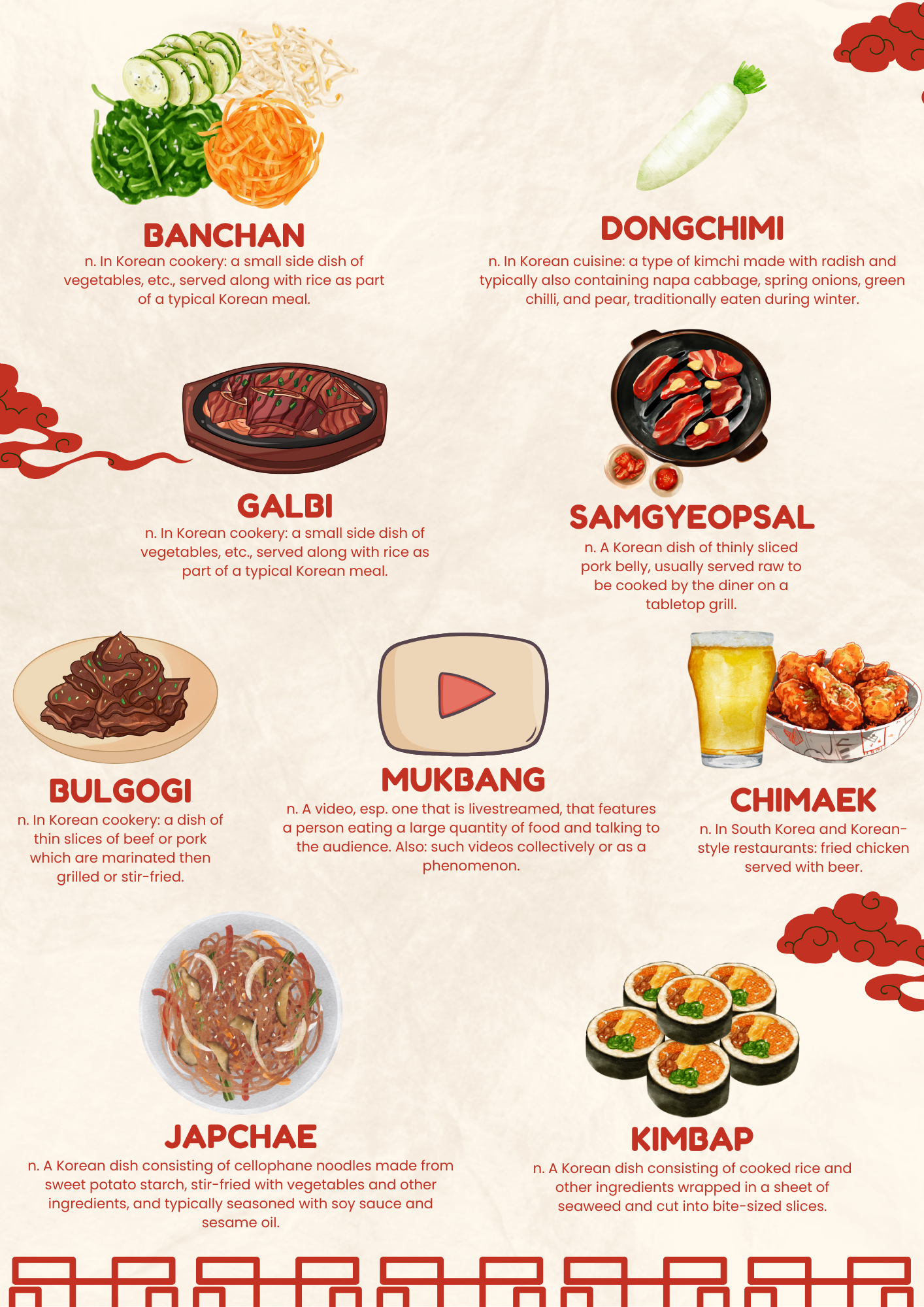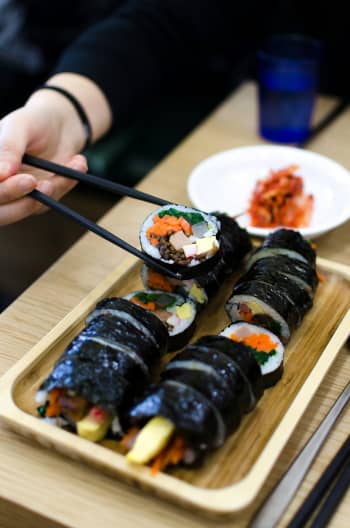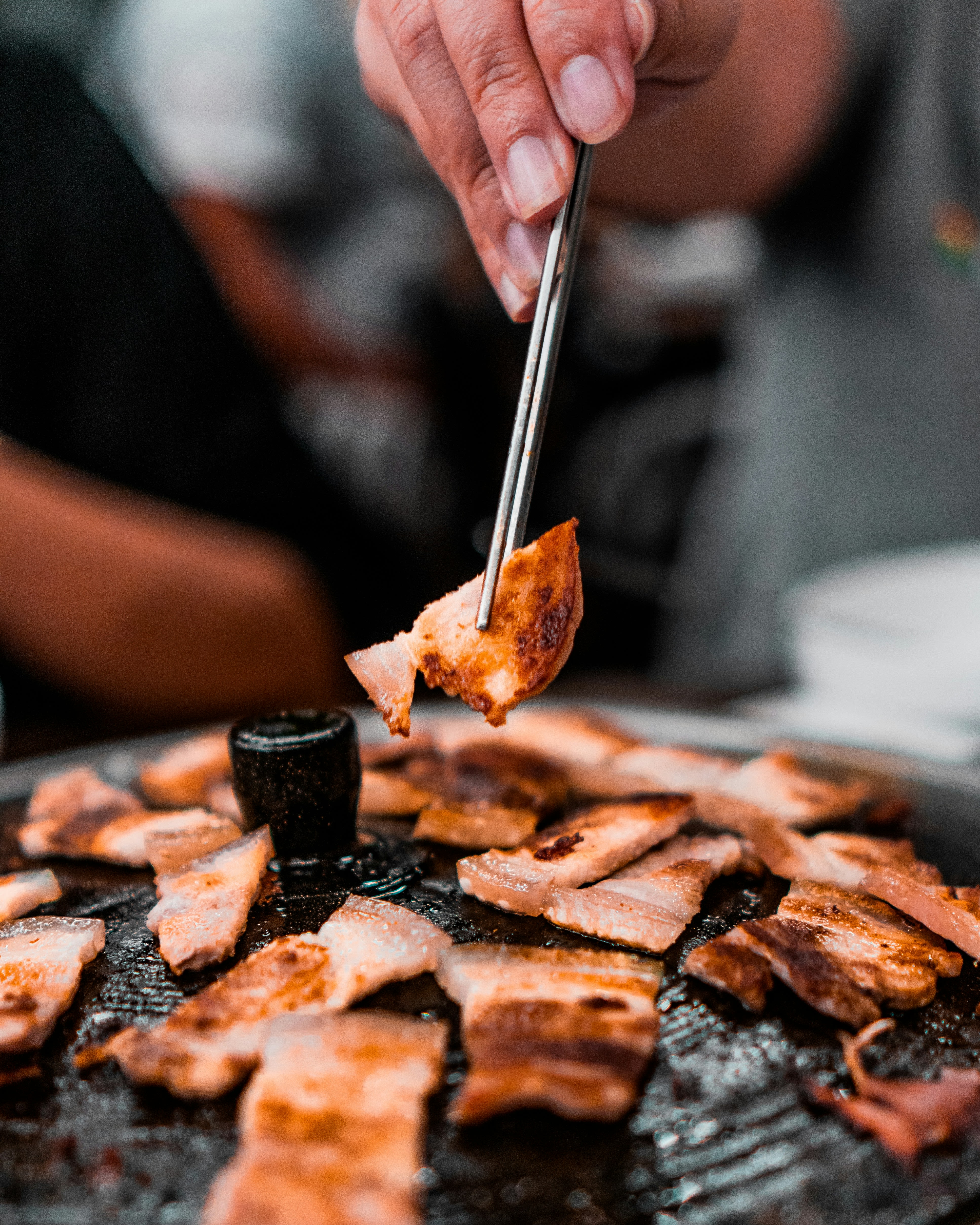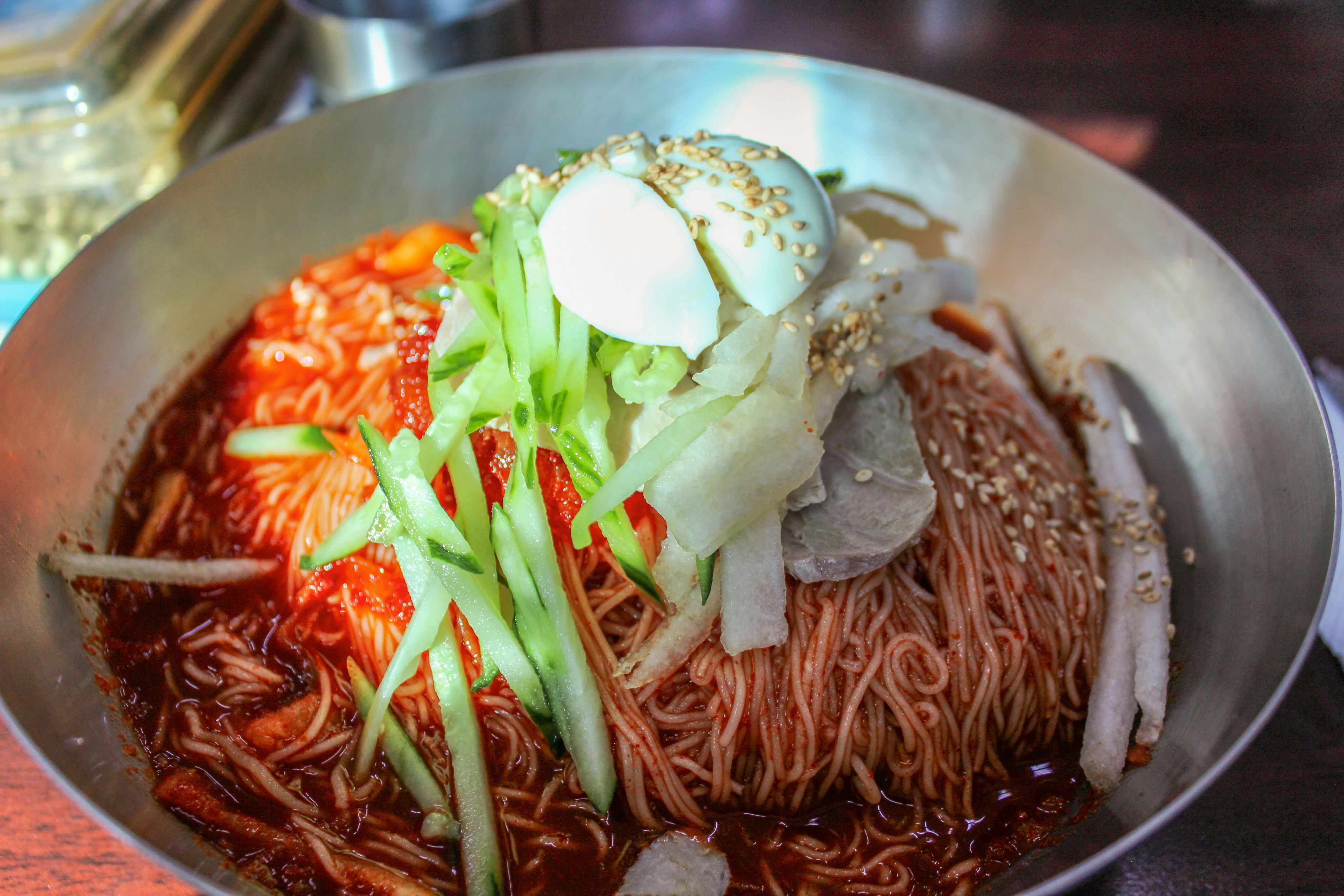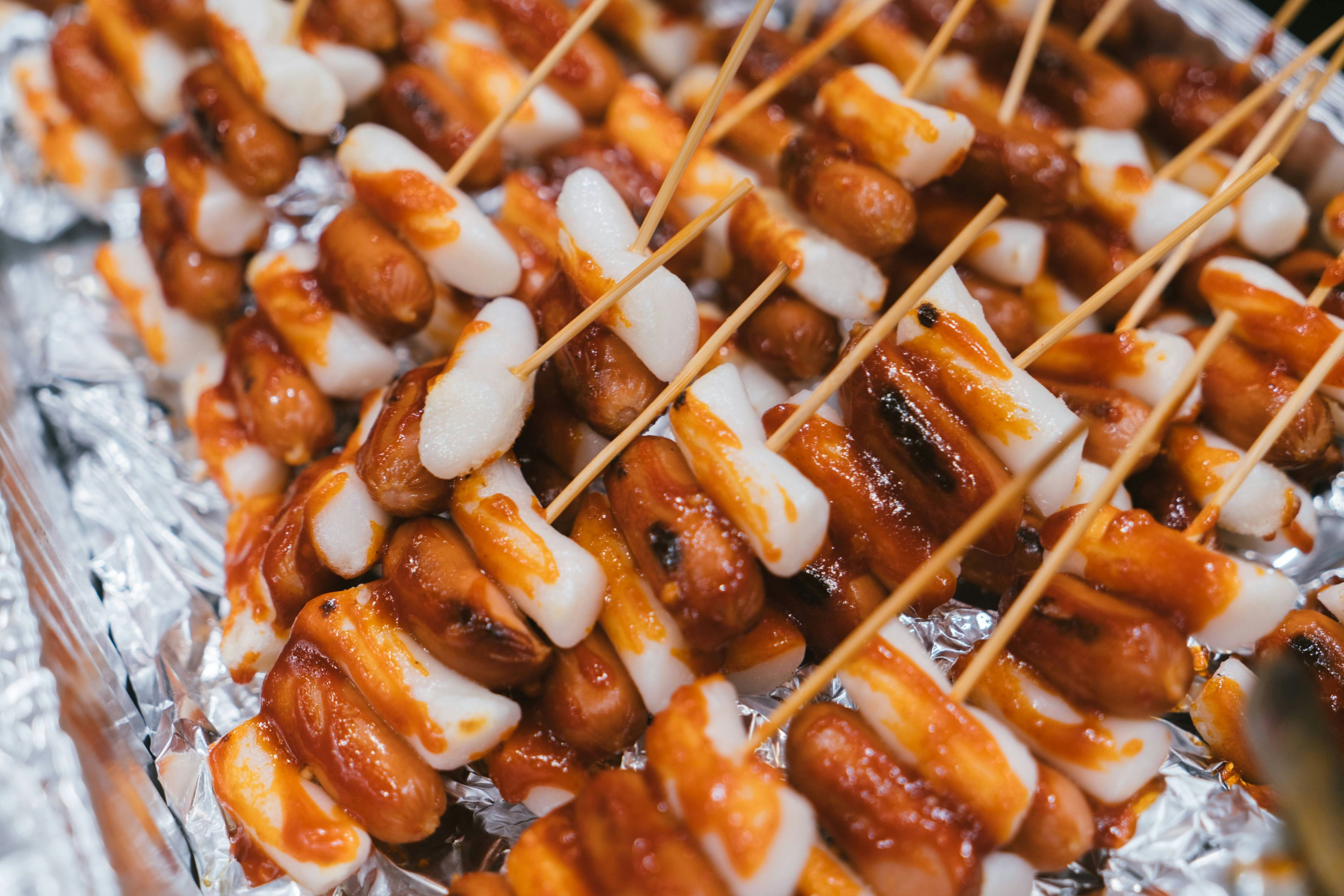The rise of Korean food in the UK
Whether you’re watching Squid Game on Netflix, buying a Korean beauty product or listening to BTS and Blackpink, “K-culture” is everywhere. And one thing is more visible in Britain’s streets and in its supermarkets than ever before: Korean food. But just what is it about Korean food that has captured the hearts of the British public?
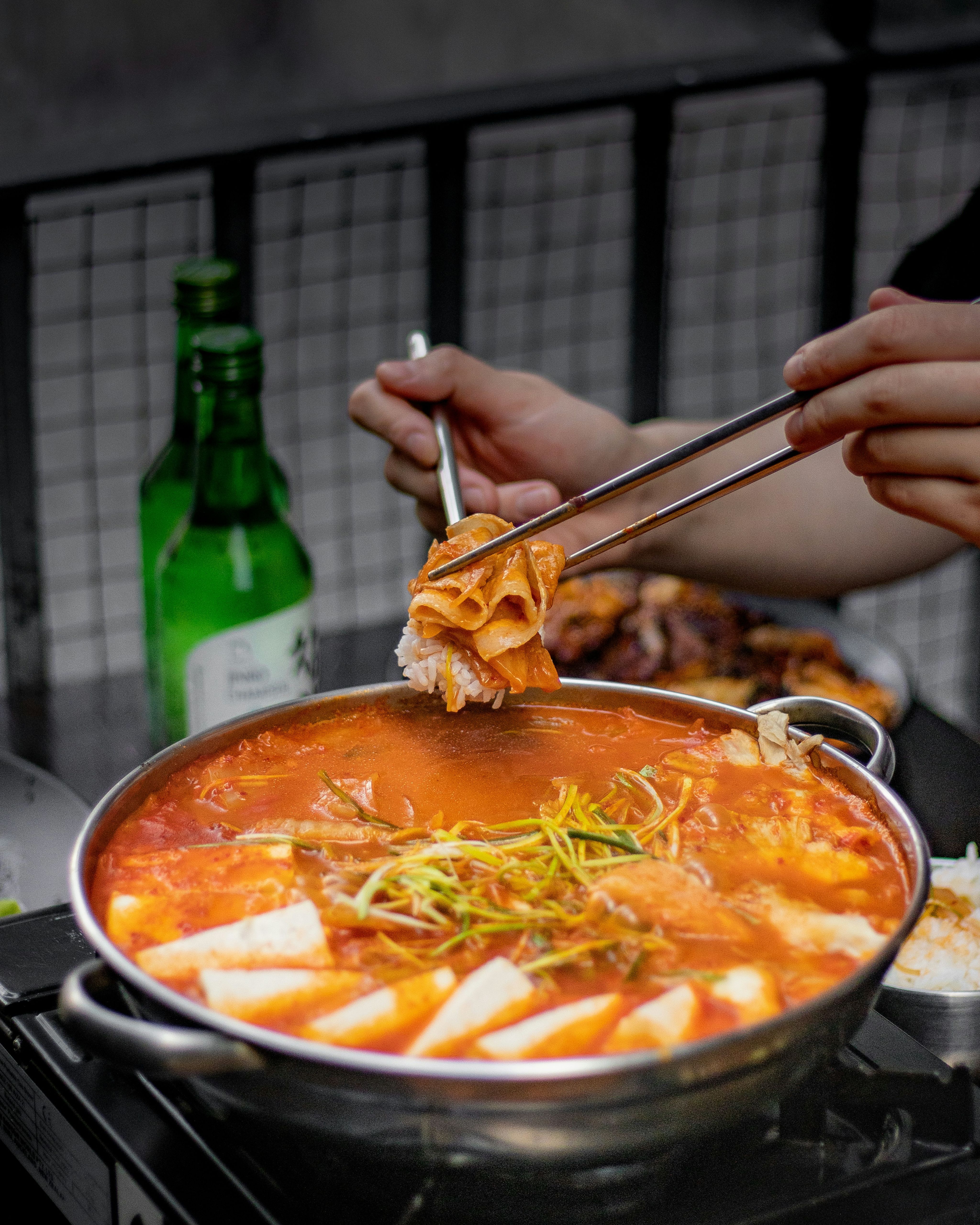
Pull up Google maps in London in 2025, and you’re likely to never be more than 15 minutes away from a Korean restaurant.
Korean food has never been more popular in the UK: Supermarkets sell Korean condiment gochujang, pubs serve burgers with kimchi - even Gregg’s has launched their own Korean BBQ Chicken Flatbread.
New research reveals the nation is riding a ‘K-Wave’, spending around £3.5 billion on Korean products, with food accounting for 58% of this total, according to consultancy Development Economics.
But just where has this explosion in popularity come from?
"The Korean Wave"

The Korean Wave, broadly known as Hallyu, refers to the circulation and growth in popularity of Korean cultural products globally - notably K-pop, K-dramas and other forms of entertainment.
The term Hallyu (한류) is made of two root words in Korean: Han meaning ‘Korean’ and Ryu meaning ‘flow’ or ‘wave.’
British-Korean influencer Becky Lee Smith (known online as @hangukhapa), said of Hallyu: “It’s this kind of soft power that the Korean government, I guess, planned since the early 90s.
“They knew that a way to get Korean culture out there was through food, music and entertainment, and it worked.”
The wave began in the 90s across parts of East and South-East Asia when Korean dramas, movies and films exploded in popularity, before expanding broadly into the West more recently, particularly aided by the rise of social media and video-sharing platforms.
The term Hallyu was added to the Oxford English Dictionary in 2021, along with 26 other Korean terms.
"We are all riding the crest of the Korean wave," the Oxford English Dictionary said in a statement at the time.
However, this wave is not just limited to entertainment: as food is such an integral part of Korean culture and daily life, it was inevitable that as a by-product of this increased interest in Korean media exports, people would also become curious about the food.
"We are all riding the crest of the Korean wave"
It is no coincidence that of the 26 words added to the Oxford English Dictionary in 2021, nine of them refer to Korean cuisine.
FOOD FOCUSED: All the K-food related terms added to the OED in 2021. Image credit courtesy of Beccy Bollard.
FOOD FOCUSED: All the K-food related terms added to the OED in 2021. Image credit courtesy of Beccy Bollard.
In K-Culture, food is fundamental
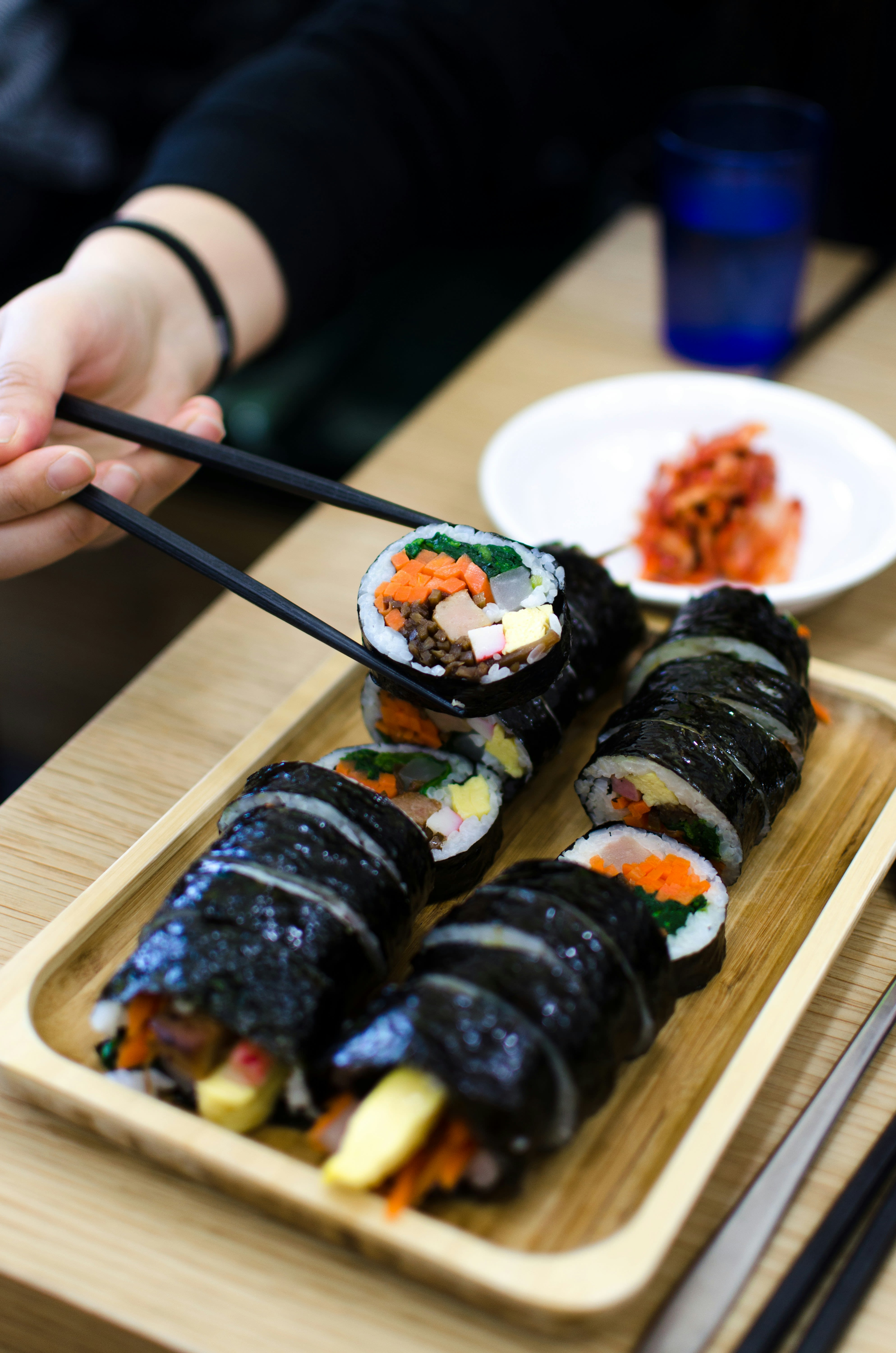
Turn on a Korean drama, and there will invariably be a scene in which the characters share a ramyeon outside a convenience store, or a Korean family celebrate over a plate of Korean fried chicken.
Popular K-pop stars regularly share livestreams of them eating Korean food, with top stars such as BTS’ Jungkook going viral for a noodle recipe he shared.
A study in the journal of Ethnic foods said: “The global popularity of K-pop music and Korean movies and dramas has increased worldwide interest in Korean culture as a whole.
“This expanded interest in Korean culture has also increased awareness and interest in Korean ethnic foods (K-foods) since it is an integral component of the Korean lifestyle and culture.”
Lee-Smith, who started a Korean supper club last year, noticed that a significant number of attendees were K-pop and K-drama enthusiasts.
She said: “I’ve had some families tell me they bonded through K-Drama.
“Having it featured in dramas makes people want to try it, when they see their favourite actors or K-pop stars eating something.”
Online trends have often sprung from the foods showcased in popular Korean dramas and movies, for example: Netflix’s most viewed show of all time Squid Game sparked a frenzy of interest in the dalgona candy (a nostalgic childhood treat in South Korea made from sugar and baking soda) used in one of the show’s life or death challenges.
According to Just Eat’s 2024 survey of 2,000 people by OnePoll, nearly half of Brits (47%) are seeking Korean goods, with 53% of consumers citing Korean music and TV as their motivation for doing so.
Judy Joo, the Korean entrepreneur and chef behind popular Korean Fried Chicken chain Seoul Bird said: “K-culture is global now.
“The catchy beats of K-pop, the addictive storytelling of K-dramas, the glass-skin glow of K-beauty—it all builds this curiosity.
“People fall in love with Korea’s cultural exports and then want to taste the real deal.”
However, according to British-Korean influencer Lee-Smith, it wasn't always this way:
TIMES HAVE CHANGED: Becky Lee-Smith reflects on how attitudes towards Korean culture have changed in the UK, compared to when she was growing up here.
TIMES HAVE CHANGED: Becky Lee-Smith reflects on how attitudes towards Korean culture have changed in the UK, compared to when she was growing up here.
.
Born and raised in the UK to a Korean mum and English dad, 32-year-old Lee Smith promotes Korean food and culture through her Instagram, where she has over six thousand followers.
She said: “Growing up when my mum would make me gimbap, which is rice wrapped in seaweed, and I’d take it to lunch I’d be so embarrassed of my heritage and the food I ate at home, and I remember telling my mum: ‘Please just make me sandwiches, don’t make me any Korean food because people don’t like the smell and don’t want to see it’ and now it’s become a trend and I feel so proud that I can actually share my culture.”
I remember telling my mum: ‘please just make me sandwiches'."
She began posting her home-cooked Korean meals on Instagram during lockdown in 2020, alongside stories her mother would tell her about the rich history of Korean food and why particular ingredients were used in each dish.
Looking back, she realised she was lucky that her posting coincided with a broader cultural shift in interest towards Korean food, in part accelerated by the contactless, digital consumption brought about by the Covid-19 pandemic.
She continued: “That’s when people started to get really interested in Korean food, and because people were at home, there were lots of online kimchi-making lessons and things.”
And as Lee has observed, the interest has not stopped growing.
According to the Korea Trade Investment Promotion Agency (KOTRA), Korean food exports to the UK grew 122% YoY in 2024, and the Just Eat Hub reported that the number of Korean restaurants partnering with them has increased by 76% since 2024, and that orders of Korean food on Just Eat have grown 23% in the last year.
The British high street is reflecting this change

On one 20 metre stretch of Tottenham Court Road Korean, food retailers Oseyo and Seoul Plaza sit almost directly next to each other, with popular Korean Street Food restaurant Bunsik just across the road, alongside k-beauty stores like Pure Seoul and MOIDA.
Oseyo and Seoul Plaza boast a combined 41 stores nationwide and Bunsik (the title of which literally means “flour-based food”), which caused hour long queues after going viral on Tiktok, is about to open the “biggest Korean restaurant in the UK” in Manchester.
British retailers are also taking note of an increased consumer interest in Korean food, with a recent report by Waitrose finding that sales of the red pepper paste gochujang, a Korean cuisine staple, had increased by 71%, and searches on waitrose.com for ‘Korean chicken’, ‘Korean bbq’ and ‘Gochujang’ in 2025 increased by 974%, 330% and 572% compared to the same time last year.
Emilie Wolfman, trend manager at Waitrose, said: “The likes of gochujang, popularised by dishes like Korean fried chicken, has sparked customer interest in experimenting with the fermented chilli paste in a variety of dishes.”
A 2023 survey by the Department for Culture, Media and Sport (DCMS) found that 64.1% of British respondents were willing to purchase Korean food and services.
This demand is reflected in the availability of Korean food products in major UK supermarkets such as Tesco and Sainsbury's, with Korean food brands like Bibigo, established in May 2022, now available in more than 450 stores nationwide.
Lee-Smith said: “Now you can even get Korean food in Sainsbury’s and Morrisons, whereas before you’d always have to go to a Korean food market."
Just what is so appealing about Korean food?
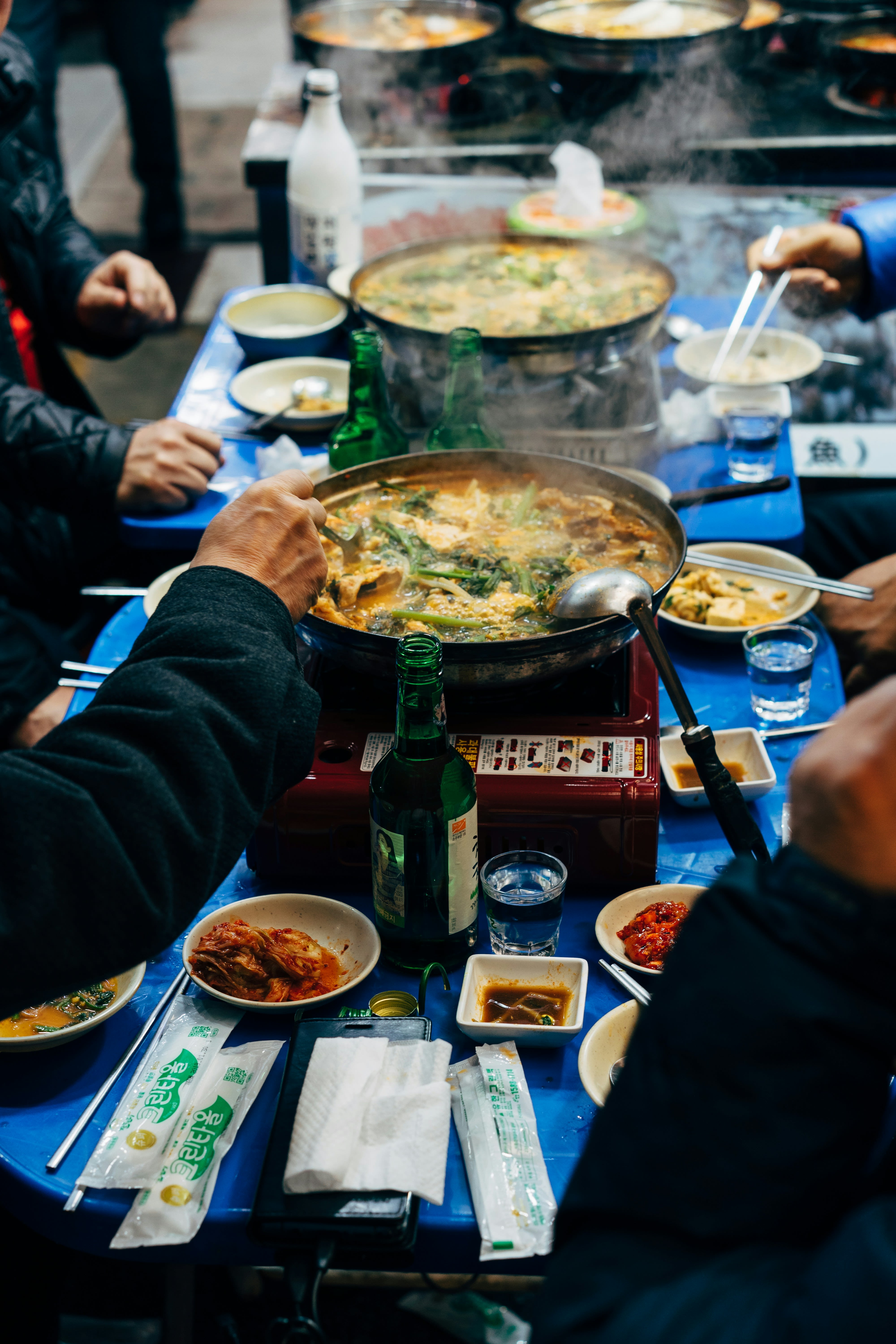
The Korean food landscape is vast and varied, having developed and evolved across the country’s rich and cultural and political history.
It is a cuisine that is simple and delicious, with ingredients and preparation techniques that draw uniquely from the surrounding environment.
A traditional Korean meal typically centres around some form of rice, soups, stew, meats or seafood, usually accompanied by a variety of small side dishes (known as banchan).
It also utilises preparation techniques that aim to preserve the food and enhance its natural flavours and nutritional value, such as fermentation, pickling and stewing.
Perfect for the health-conscious
Because of preparation techniques such as fermentation, which is increasingly being considered important in promoting a healthier gut microbiome, Korean food is also growing in popularity due to its perceived health benefits.
Emer Lowry, a Nutritionist at Waitrose, said: “As people increasingly seek to incorporate more flavourful and nutritious whole foods into their diets, it’s no surprise that ingredients staple to Korean dishes have gained widespread popularity.
“Fermented foods, such as kimchi, have become mainstream due to its reported health-promoting effects.”
SAMGYEOPSAL: Korean grilled pork. Image credit courtesy of Unsplash.
SAMGYEOPSAL: Korean grilled pork. Image credit courtesy of Unsplash.
BIBIM NNAENGMYEON: Korean spicy cold noodles. Image credit courtesy of Unsplash.
BIBIM NNAENGMYEON: Korean spicy cold noodles. Image credit courtesy of Unsplash.
TTEOKBOKKI: A Korean snack made of rice cake. Image credit courtesy of Unsplash.
TTEOKBOKKI: A Korean snack made of rice cake. Image credit courtesy of Unsplash.
The three jangs
Korean food is also known to be bursting with flavour, the fundamental basis of which 28-year-old Korean chef Lee Han Hee, who moved to London from Korea in 2019 to pursue his career, said comes from three simple sauces or condiments, known as “the three jangs”: Gochujang (fermented red pepper paste), doenjang (soy bean paste) and ganjang (soy sauce).
Both Gochujang and Doenjang are made from meju, a brick of dried fermented soybeans.
BEAUTIFUL SIMPLICITY: Chef Lee Han Hee describes the simplicity at the heart of Korean cuisine
BEAUTIFUL SIMPLICITY: Chef Lee Han Hee describes the simplicity at the heart of Korean cuisine
The cuisine is also characterised by a concept known as Obangsaek, or the rule of 5, which describes the unique combination of at least 5 flavours, colours or textures that comprises so many Korean dishes, adding to their appeal.
Even kimchi alone obeys this rule, embodying sweet, salty, sour, spicy and umami all at once.
An experience
It is also the way in which Korean meals are presented that drives their unique appeal.
Korean meals are about sharing an experience, and creating a convivial, communal atmosphere.
When you are at a Korean restaurant, dishes such as stews are served in sharing sizes, cooked on a stove brought to the table.
They are also served alongside banchan, which are provided for the whole table to enjoy and share together, often free of charge.
Korean BBQ also provides a hands-on experience novel to the British consumer: inviting customers to come along and cook their meat on a shared grill at the centre of their restaurant table.
Joo said of Korean BBQ: “You’re not just eating—you’re grilling, dipping, wrapping, sharing.
“It’s communal and comforting with just the right amount of drama.”
Adaptable and fusion-able
Korean food is also by its nature adaptable and fusion-able, constantly innovating and responding to globalisation, a quality that has been instrumental in driving its popularity in the UK.
Contemporary Korean cuisine is marked by American influence brought about following the Korean War, as American troops stationed in the country introduced the Korean palate to fast food and Korean-Western fusions.
One such example of the fusio- ability of Korean cuisine that arose from this era is budae-jjigae, also known as army stew, which combines a traditional Korean stew base with baked beans, hot dogs and spam.
Joo said: “The street food scene in Korea is a constant livewire: new stalls, bold hybrids, and fun twists popping up daily.
“Korean food is also going global.
“We’re starting to see crossovers and fusion dishes that blend Korean flavours with influences from everywhere.”
Restaurants, supermarkets and retailers are taking notes, with a 2024 report by food and drink PR specialist William Murray suggesting that UK pubs capitalise on the increasing demand for Korean food through fusion dishes.
In this way, the fusion-ability of Korean cuisine has acted as a gateway, drip-feeding the unique flavours of Korea to the British public through recognisable and already popular dishes such as Kimchi burgers and gochujang spare ribs.
Judy Joo, whose Korean fried chicken chain Seoul Bird opened in 2020, understood this premise.
She said: “Fried chicken is mega popular and the demand is real.
“So doing our version with a Korean twist was a no brainer.”
What does the future hold for Korean food?
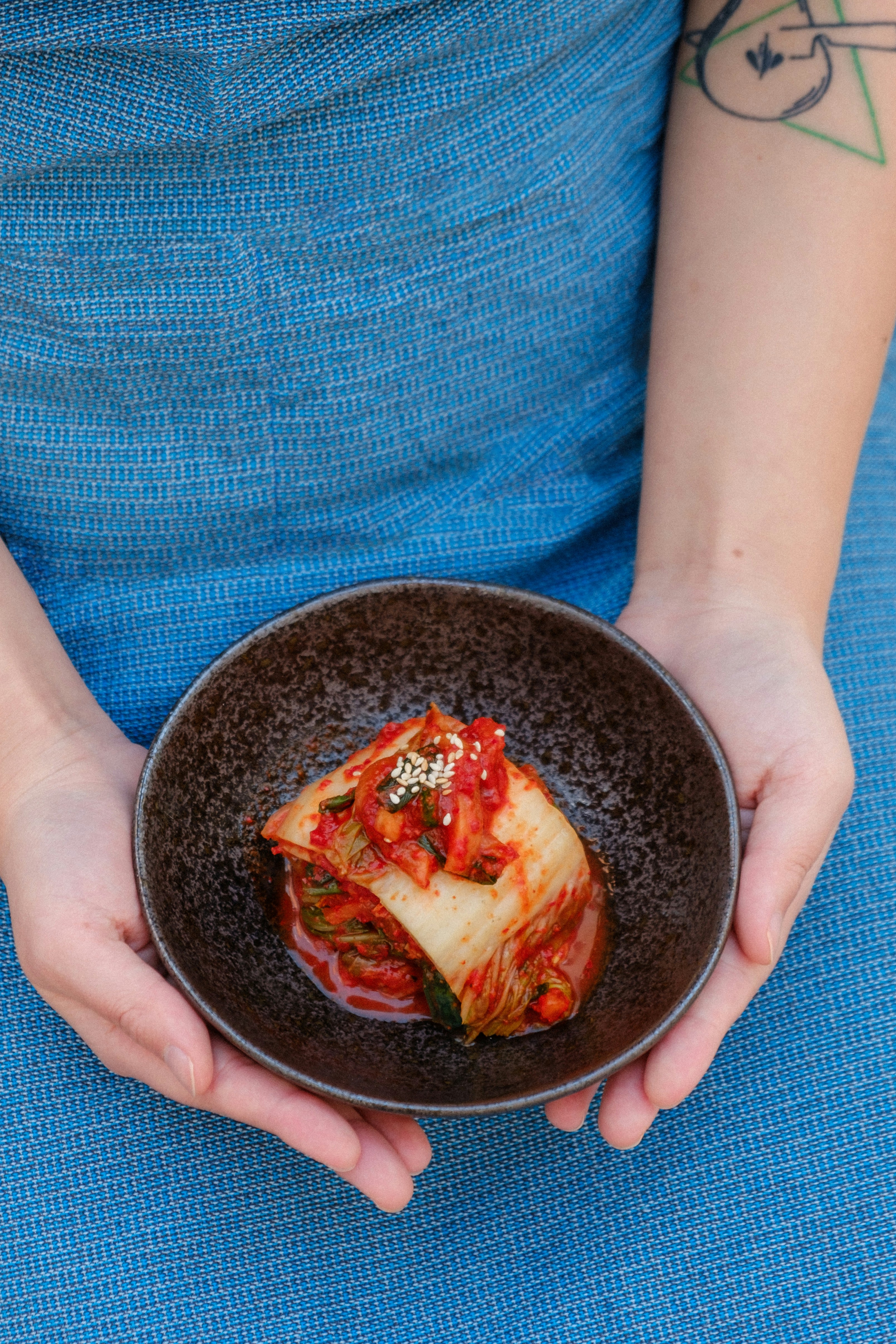
It’s unclear what the future holds for the Korean wave, with many predicting an inevitable slow-down.
However, the audience for Lee-Smith's supper club has become so large (reaching up to 60 attendees) and diverse that she has had to try and find Korean restaurants across the capital that serve halal, gluten-free and vegetarian options.
She said: “The first generation that came here, their main customers weren’t non-Korean, so they don’t really cater that much for those that are gluten free or vegetarian or need to eat halal meat.”
As for Joo, she insisted that the Korean wave is here to stay, evidenced by the fact that she has even served her fried chicken to sports fans at Tottenham Hotspurs stadium.
She believes the future of Korean food is “Up, up, and away".
Joo continued: “The popularity isn’t slowing down—it’s expanding.
"From street eats to fine dining, the diversity and depth of Korean cuisine are finally being explored.”
Chef Han Hee said he hopes that, beyond the fusion and popular favourites such as Korean BBQ and tteokbokki, there will be a wider appreciation for Korean food in the UK as a diverse, traditional cuisine.
He said: “I see the chance because people love it so much, people in London have a huge favourite in Korean food and I feel very proud and very grateful and I’m so happy for that, but as a chef I want to make people even happier and even prouder.
“I’m on the journey for people to explore even more diversity in Korean food.”
What is clear is that the surge in popularity of Korean food has built an undeniable sense of pride and fulfilment amongst Koreans living in the UK.
Joo said: “It’s surreal.
“As a proud Korean woman, it feels like a long-overdue standing ovation for a culture I’ve been championing for decades."
